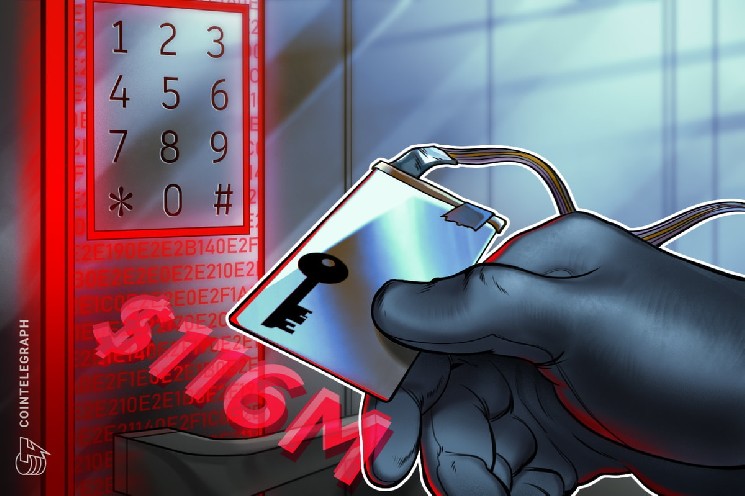Author: Li Hanming
Two major events occurred last week: first, the Federal Reserve cut interest rates by 25 basis points as expected; second, the US-China trade war was halted for another year.
Given the current size of the US national debt (principal of $38 trillion and annual interest payments of approximately $1.2 trillion), this interest rate cut is expected to save $95 billion in annual interest payments. What does $95 billion represent? From 2025 to today (based on a 10-month period), the US government's tariff revenue is estimated at $195 billion. In other words, Powell's few words this year (two 25-basis-point cuts) have resolved all the tax-related issues President Trump has been creating since taking office this year (tariffs, Section 301 tonnage tariffs, and various other matters).
As I mentioned in my previous article, any tax burden has a distinction between taxpayers (those directly responsible for fulfilling the obligation to pay) and tax bearers (those who actually bear the tax burden after market transactions). For example, the collection of customs duties is a cross-border trade of goods, and the nominal taxpayer is the importer. However, the importer can, to some extent, pass the tax burden to the exporter through price negotiations (or, in other words, the importer adds a markup at the retail end, passing the tax burden to the consumer). Similarly, the collection of the 301 tonnage tax is a transportation matter, and the nominal taxpayer is the shipping company. However, the shipping company can also, through negotiations, pass the tax burden to the cargo owner.
Therefore, Trump previously had some room to mislead the public, even going so far as to suggest that "tariffs are not taxes" through the "External Revenue Service," which corresponds to the IRS ("Internal Revenue Service"). However, due to the complexity of the actual industries involved, there is considerable room for maneuver in the collection of these taxes.
Let's take the Section 301 tonnage tax as an example. The US says it will impose taxes on ships related to China that dock at US ports. However, no shipowner would dock a Chinese vessel at a US port without a valid reason—it's not cost-effective. In other words, Chinese ships docking at US ports is a means, not an end, of US-China trade.
Few things can be accomplished by only one means—and the same is true for US-China trade. We've discussed methods for reducing tariffs many times, so I won't elaborate here. Regarding the Section 301 tonnage tax, shipping companies now generally use ports in Hong Kong, Macau, Taiwan, Japan, South Korea, Vietnam, Canada, and Mexico as transit points. They can use various methods, including barges, rail, and road transport. For example, Chinese ships can transport goods from mainland China to Vancouver, Canada, or Tijuana, Mexico, and then by rail or barge into the US. US ships can use trucks or barges to transport goods from Shenzhen to Hong Kong, and then depart from Hong Kong. The methods using ships from countries other than China and the US are even more diverse. This inevitably means that the collection and enforcement of the Section 301 tonnage tax will be somewhat compromised—for every clever plan, there's a countermeasure!
At the same time, the collection of taxes and fees also brings some new problems. In any country with high tariffs, corruption among customs officials is rampant—this is quite obvious—if giving customs officials 10% can solve the problem, why should I give the country 20% or even 30%? Therefore, if tariffs are to be levied, the standards must be clear and transparent to prevent underhanded dealings. For example, levying tariffs on bulk commodities is less expensive than levying them on ordinary goods—bulk commodity prices are generally relatively open and transparent, and customs officials can simply follow the rules, leaving little room for impropriety. Conversely, the greater the room for impropriety among customs officials, the easier it is for corruption to breed.
In fact, due to the vast range of goods involved, determining and levying tariffs is far more difficult than determining personal income tax. This is why the United States primarily uses personal income tax—it is levied on wages, which are among the most standardized services. The continued postponement of tariffs this time is for the same reason—the US has realized that continuing to impose tariffs is not worthwhile.
Of course, let's return to the topic of interest rate cuts. Compared to the arduous task of collecting tariffs, which often yields minimal returns, interest rate cuts are clearly much easier in reducing US fiscal spending. For example, in 2021, during a period of low interest rates, the US only needed to pay $352 billion in interest on its national debt; by 2024, this figure would be $881 billion. The difference of $400 billion, if covered by tariffs, would amount to $1,200 per American—equivalent to $12,000 worth of imported goods at a 10% tariff rate.
Because the United States is a deficit-run country, the level of its national debt interest rate directly determines whether its finances can be sustained. As the saying goes, "If the skin is gone, where will the hair attach?" For the Federal Reserve, maintaining a high interest rate that the US government cannot afford for an extended period, leading to a "deficit dam" that cannot be paid, will ultimately prevent the government budget from passing, putting the dollar in a very awkward position. The Federal Reserve itself will also lose its bargaining power based on the US and the dollar. The recent surge in dollar-denominated gold prices over the past two months, especially during the US government shutdown, is a case in point—many investors, fearing the US finances would collapse, opted to retreat, preferring to hold gold for peace of mind.
Therefore, the Fed's rate cut is good for everyone—for Trump, it relieved his immediate crisis, allowing him to readjust the budget and reallocate the reduced interest payments to healthcare and social security, and to try to reach an agreement with the Democrats to reopen the government; for the market, investors also breathed a sigh of relief, and gold prices actually fell.
In the most extreme scenario, if government bond interest rates remain around 0%, the government would have virtually no monthly interest payments, allowing the debt to accumulate indefinitely. In this case, the economy would become "Japan-like"—in fact, Japan has maintained low, zero, or even negative interest rates for many years.
However, as I mentioned in a previous article, regardless of whether the central bank's interest rates are high or low, it is very difficult for the elderly to obtain unsecured loans—this is because the elderly have no income. Currently, loans for the elderly are essentially asset-backed loans—and these are the kind where the collateral is eventually foreclosed. At the same time, due to zero interest rates on deposits, the elderly's savings cannot generate passive income, and with expected income growth, they have no surplus money for consumption.
This has led to a double whammy of an aging population and zero interest rates, severely restricting the cash flow of the elderly in Japan and forcing them to tighten their belts, gradually spreading into deflation. This has resulted in severely insufficient domestic demand and a heavy reliance on exports. Furthermore, with manufacturing shifting to countries like China, modern Japanese society is essentially a "tourist destination," a nation built on service trade exports where "foreigners serve foreigners." It recruits low-wage labor from countries like China, Vietnam, the Philippines, and Nepal (though the number of Chinese laborers has decreased with domestic economic development) to serve tourists and investors from China and Europe.
The United States is also gradually aging – statistics from 2024 show that the US has 61.2 million people aged 65 and over, accounting for about 18% of the total population (compared to 15% in China, 22% in the EU, and 30% in Japan). Considering that Trump's immigration restrictions will make it more difficult for young immigrants to come to the US, the aging of the US population is likely to accelerate in the next four years. Following this line of thought, when interest rates are rising, Americans can still enjoy a more luxurious lifestyle – in 2023, there were 161 million passports in circulation in the US, increasing to 183 million in 2025, with significant increases in first-class cabins on airlines, hotel suites, and luxury cruises over the past three years; however, with interest rate cuts, this lifestyle will inevitably begin to fade.
Having discussed aging, let's return to trade itself. Japan's case illustrates that an aging society cannot sustain high tariffs—caring for the elderly consumes a significant portion of the workforce, leaving insufficient labor to produce the products society needs. In such situations, the choice is either to import foreign labor or promote imports of foreign goods. If tariffs are increased, businesses will hire more foreign workers to substitute domestic products for foreign ones; if tariffs are reduced, businesses will establish factories overseas and actively import goods. Both approaches can boost domestic production and stabilize prices. Japanese society has effectively adopted both: actively importing labor to maintain the normal operations of small and medium-sized enterprises and export-oriented businesses, while simultaneously lowering tariffs to a low level, reducing the overall burden on consumers.
However, Trump's two major policies—high tariffs and low immigration—both restrict imports, will effectively overlap, creating a double whammy. As mentioned earlier, increased tariffs on imported goods will raise domestic prices to a similar level; however, the lack of immigration will prevent domestic businesses from expanding production, ultimately leading to market shortages and a black market (which is the current situation in the US). In this context, it would be strange if there wasn't inflation.
However, since this inflation is not caused by an excess of money supply, raising interest rates to absorb the excess money will obviously have limited effect—but will instead significantly increase the government's fiscal burden. Therefore, either imports or immigration can be reduced, and this must be combined with low interest rates to control the situation.
Currently, it seems that Trump is more concerned about immigration issues than tariffs—after all, dealing with people in his own country is much more complicated than dealing with people on the other side of the Pacific.








